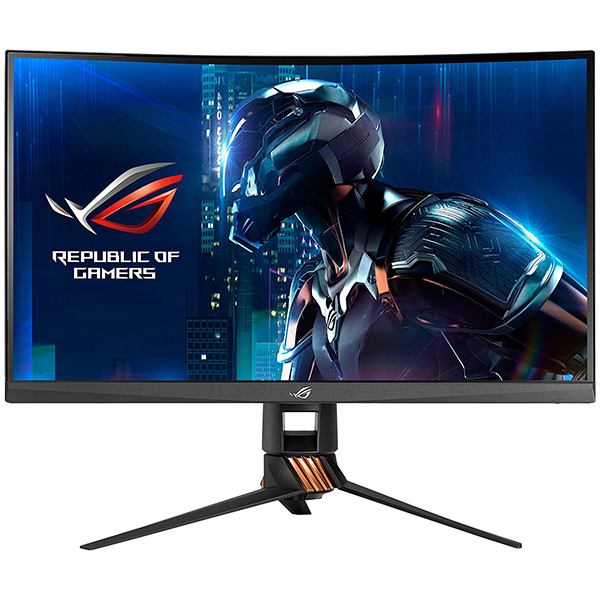Acer XF251Q Gaming Monitor Review: Ideal Budget Rig Companion
Why you can trust Tom's Hardware
Brightness & Contrast
To read about our monitor tests in-depth, check out Display Testing Explained: How We Test Monitors and TVs. We cover brightness and contrast testing on page two.
Uncalibrated – Maximum Backlight Level
We don’t have many monitors at the XF251Q’s price point in our database, so we selected value-oriented models that feature fast refresh and adaptive sync in a flat, 16:9-aspect panel. Our group today is Asus’ PG27V and XG32V, MSI’s MPG27CQ and MAG24C and AOC’s AG322QCX.



The XF251Q is rated for 250 nits of brightness, but our sample easily hit nearly 312 nits. It’s a bright screen with good uniformity and better contrast than many other TN-based displays, which helps in the color saturation department and increases image depth.
Black levels were more than twice as high as the VA panels in the group, but it was a good bit darker than the PG27V, which has a display that looked more gray than black.
The resulting contrast is 1,077.7:1, which competes favorably with many IPS monitors we’ve tested (outside of today's comparison group). Unless you go with a monitor that has a VA panel or HDR, you won’t find much better contrast and black levels than the XF251Q.
After Calibration to 200 nits



The XF251Q’s RGB sliders begin at center-range, so you can make balanced adjustments without reducing dynamic range. With the backlight set to 200 nits peak, the black level was an excellent 0.1877 nits, just the thing to make dark scenes in games look deep and foreboding. Again, you’ll need VA or HDR to beat it, even if you spend a lot more money. This is excellent performance at any price.
The XF251Q’s intra-image contrast stayed strong at a respectable 948.7:1. It was superior to the Asus PG27V in all aspects of our brightness and contrast tests. Obviously, Acer did not cut corners in its choice of panel parts. Its grid polarizer and layer fitment are as good as anything we’ve tested. Of course, the VA panels in our comparison group operated on a different level. That is the tech to consider when HDR isn’t in the budget. But for more modest PCs, this Acer offers excellent image quality.
Get Tom's Hardware's best news and in-depth reviews, straight to your inbox.
MORE: Best Gaming Monitors
MORE: How We Test Monitors
MORE: All Monitor Content
Current page: Brightness & Contrast
Prev Page Features & Specifications Next Page Grayscale, Gamma & Color
Christian Eberle is a Contributing Editor for Tom's Hardware US. He's a veteran reviewer of A/V equipment, specializing in monitors. Christian began his obsession with tech when he built his first PC in 1991, a 286 running DOS 3.0 at a blazing 12MHz. In 2006, he undertook training from the Imaging Science Foundation in video calibration and testing and thus started a passion for precise imaging that persists to this day. He is also a professional musician with a degree from the New England Conservatory as a classical bassoonist which he used to good effect as a performer with the West Point Army Band from 1987 to 2013. He enjoys watching movies and listening to high-end audio in his custom-built home theater and can be seen riding trails near his home on a race-ready ICE VTX recumbent trike. Christian enjoys the endless summer in Florida where he lives with his wife and Chihuahua and plays with orchestras around the state.
-
Rakanyshu 6 or 8 years ago i bought a couple 24 inches screens similar to this thing for 100 each, is ridiculous that after so much time the only thing that changes is price... i mean screens and ram modules are almost the same as 8 years ago only more expensive... (ddr3 to ddr4) for regular computer usage you would not notice the difference and there is almost not worth it to buy this monitor if you already have one you bought in this decade.Reply


